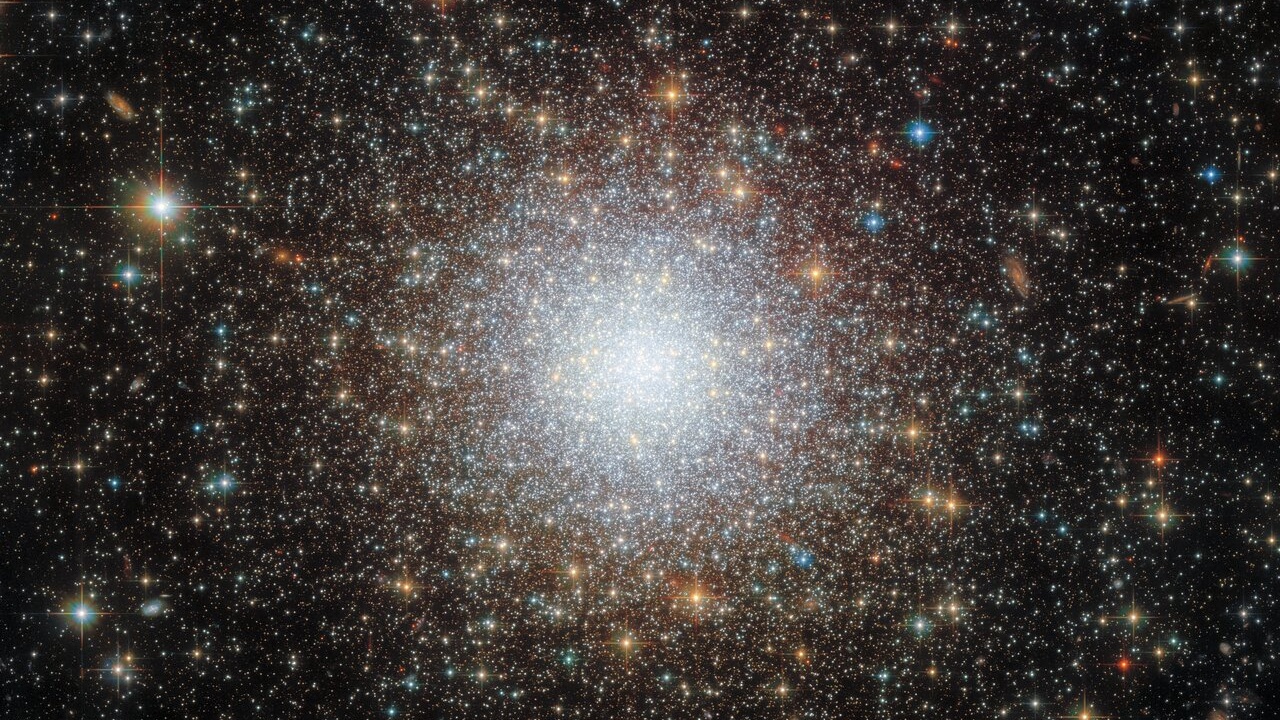Hubble Telescope sees a bright 'snowball' of stars in the Milky Way's neighbor (image)
The space telescope imaged a globular cluster located in the Milky Way satellite galaxy named the Large Magellanic Cloud, ensuring a starry white Christmas for space fans.

Even if dreams of a white Christmas fail to come true this year, the Hubble Space Telescope has ensured at least one snowball gets thrown during the festive season. Hubble collected data that was used to build a stunning image of a tightly bound cluster of stars that looks like a cosmic snowball. It's situated in a satellite galaxy of the Milky Way known as the Large Magellanic Cloud (LMC).
This globular cluster, named NGC 2210 and located around 158,000 light-years from Earth, is estimated to be around 11.6 billion years old, meaning it is similar in age to other globular clusters in the LMC as well as to the oldest globular clusters located in the Milky Way's halo.
Ironically, this means that even though NGC 2210 is just around 2.2 billion years younger than the universe itself, it is actually one of the more youthful LMC globular clusters seen by astronomers. They originally spotted it during a 2017 research campaign that was actually based on some of the data used to create the image we see now.
Other clusters seen in the same round of observations were even older than NGC 2210, with four appearing to be over 13 billion years old, meaning they formed just a few hundred million years after the Big Bang.
Related: Hubble Telescope gifts us a dazzling starry 'snow globe' just in time for the holidays
The key to the longevity of globular clusters, which can contain between thousands and millions of stars, is the fact they are highly gravitationally bound. That makes them very stable. Thus, they're excellent targets for astronomers aiming to study very old populations of stars.
The fact that NGC 2210 and other LMC globular clusters have similar ages to globular clusters in the Milky Way is a source of fascination for astronomers because it shows the two groups formed at the same time, despite the fact that the LMC and our galaxy were born independently.
Get the Space.com Newsletter
Breaking space news, the latest updates on rocket launches, skywatching events and more!
Though first discovered in 1835 by John Herschel, 2023 marked the first time Hubble — launched in 1990 — had fully imaged this globular cluster. And, well, the image perfectly exemplifies that aside from its immense scientific value, NGC 2210 is still a beautiful and sight to behold.
Join our Space Forums to keep talking space on the latest missions, night sky and more! And if you have a news tip, correction or comment, let us know at: community@space.com.

Robert Lea is a science journalist in the U.K. whose articles have been published in Physics World, New Scientist, Astronomy Magazine, All About Space, Newsweek and ZME Science. He also writes about science communication for Elsevier and the European Journal of Physics. Rob holds a bachelor of science degree in physics and astronomy from the U.K.’s Open University. Follow him on Twitter @sciencef1rst.









